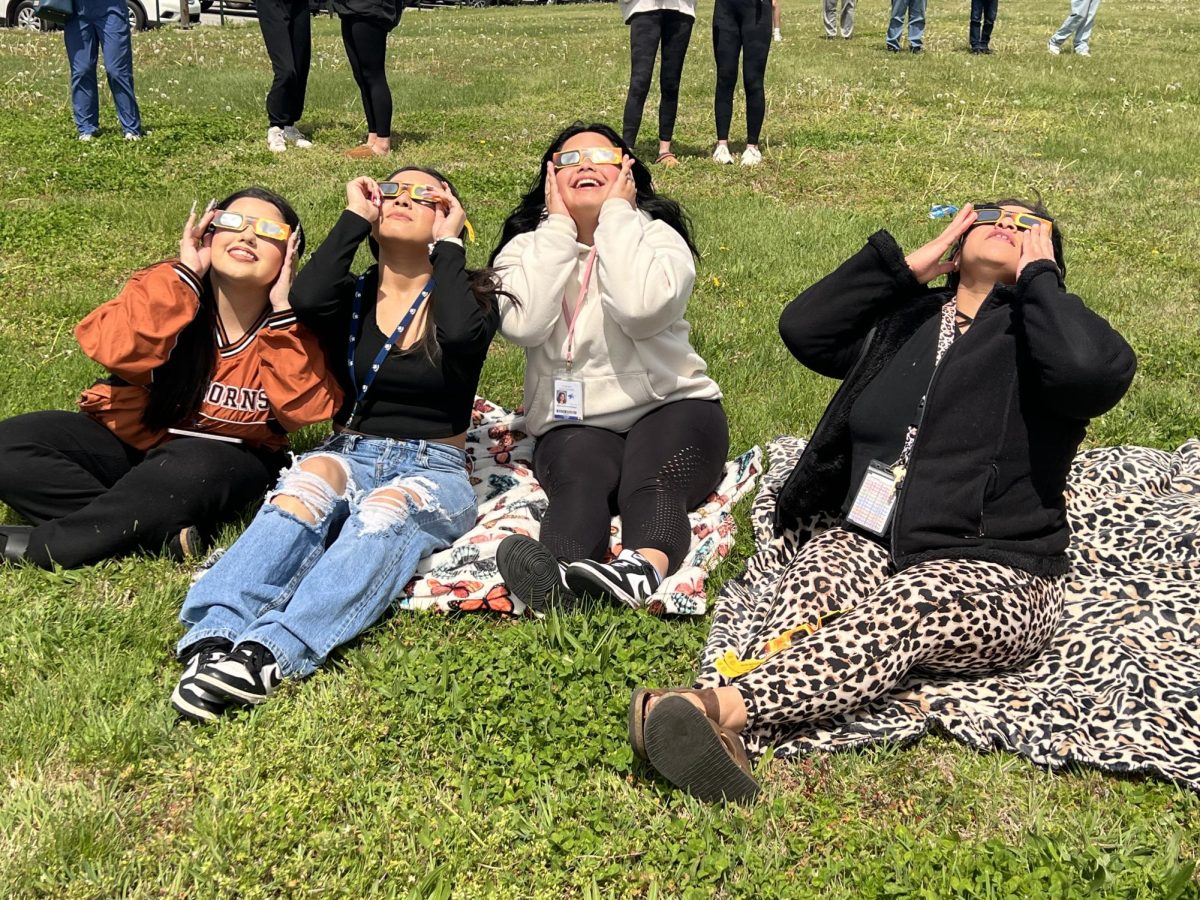Some would say it is difficult to get people together and united these days Philip Mizanin, an AP seminar teacher agrees.
“There aren’t many things that get people off their phones and out of their personal echo chambers,” Mizanin said.
While technology and the internet have brought revolutions in connection across the world, it has also damaged it in that people are often consumed in their own personalization. As Mizanin sees it, algorithms design echo chambers that mean people’s whole experience is personalized and entirely within their control. Big common events that everyone can see are just not as common anymore.
“When I was a kid, everyone watched the Olympics, local baseball teams generally played on their local stations and captured the entire city, it’s like a shared experience.” Mizanin said. “There aren’t many shared experiences anymore.”
Up until recently, Mizanin felt these shared experiences were rare. However, things would change on April 8, 2024, because of a total solar eclipse that Americans would experience everywhere.
A total solar eclipse is due to a convenient coincidence. The Sun is roughly three hundred times larger than the Moon, but the Moon is roughly three hundred times closer to the Earth than the Sun is. This means the Sun and the Moon appear the same size in the sky, and occasionally if the conditions are just right, the Moon can come perfectly between the Earth and the Sun, casting a shadow on the Earth in certain places, called a total solar eclipse. The path that this shadow takes is called the Path of Totality, and during the eclipse, the Moon perfectly covers the Sun, and those in the path are shrouded in a sudden darkness. This year, the path went over 12.2 million Americans.
The path of totality also went through a large section of Arkansas, running from Texarkana to Little Rock to Jonesboro, meaning many Arkansas had an opportunity to travel to the path.
For some, it is hard to understand why this total solar eclipse was so extraordinary. After all, according to NASA, there are approximately two to five solar eclipses a year. Wouldn’t that mean that another one of these events was inbound? Not necessarily, according to Mr. Smith, the astronomy teacher at Har-Ber. There are a few conditions that must be met: the moon’s orbit must intersect with the Earth’s orbital plane around the sun, creating what’s known as a lunar node. The Earth, Moon, and Sun must be in near-perfect alignment, known as the ecliptic plane. Additionally, the Moon must be at the right distance from Earth to completely block out the Sun’s disk which means it must also be its perigee.
“[We need to] understand that certain eclipses only happen in certain moon phases.” Smith said.“A total solar eclipse can only happen if the moon is in between the Earth and the Sun and that means also it’s only going to happen during a new moon.”
Even slight deviations in these conditions can result in partial eclipses rather than total ones. However, the remarkableness of this event is not simply in the fact that it did happen, but rather that it happened so close. In the entire course of its history as a part of the United States, the Natural State has only ever seen three other solar eclipses; one of which was in 1834, before Charles Darwin published his theory of evolution, and a sequential one in 1918, when World War I ended.
Although for many, the wait between consecutive Paths of Totality was less than eighty-four years; instead, they only had to wait seven. One particular student, sophomore Sarah Winters, whose family traveled, explained that her family had planned for the trip since the last solar eclipse in 2017. Traveling with immediate family and extended family, Winters stayed in her family cabin in Clarksville, Arkansas; an event they wanted to share together.
“When the last solar eclipse in 2017 happened, I thought it was really cool and my dad had promised my family that we would go down and see it together, ” Winters said.
However, you did not have to travel with family to understand the complete social effects of the event. According to students and faculty, the solar eclipse served as a unifying force within our local high school community, fostering a sense of collective awe and wonder among students and staff. Students on campus were permitted to have lessons outside of the classroom to observe the changing environment. So, equipped with eclipse glasses, students like senior Caz Alexander, were able to partake in various lessons revolving around the event.
“It felt pretty surreal that everyone was out there at the same time, watching the same thing,” Alexander said, “Almost like we were all connected because of this one nearly supernatural event.”
According to students like Alexander, the solar eclipse served as a powerful reminder of how a rare cosmic event could bring people together, transcending differences and fostering a sense of unity and community among the country.
“It was nice to make it a new experience and unique experience,” Mr Mizanin said.“to make a new memory and to share that with family that you know, something everyone regardless of their age was going to remember.”
